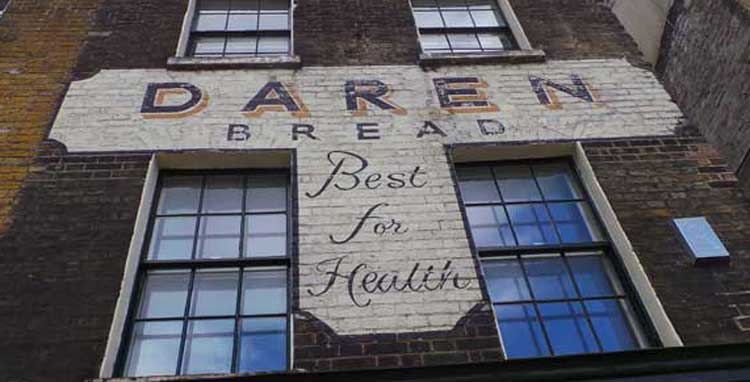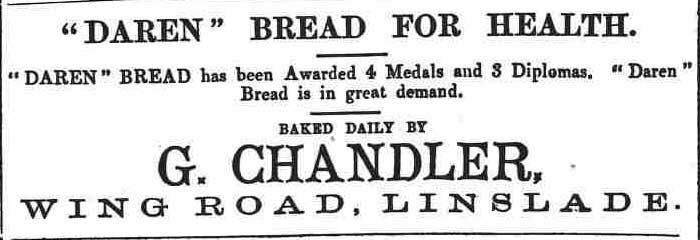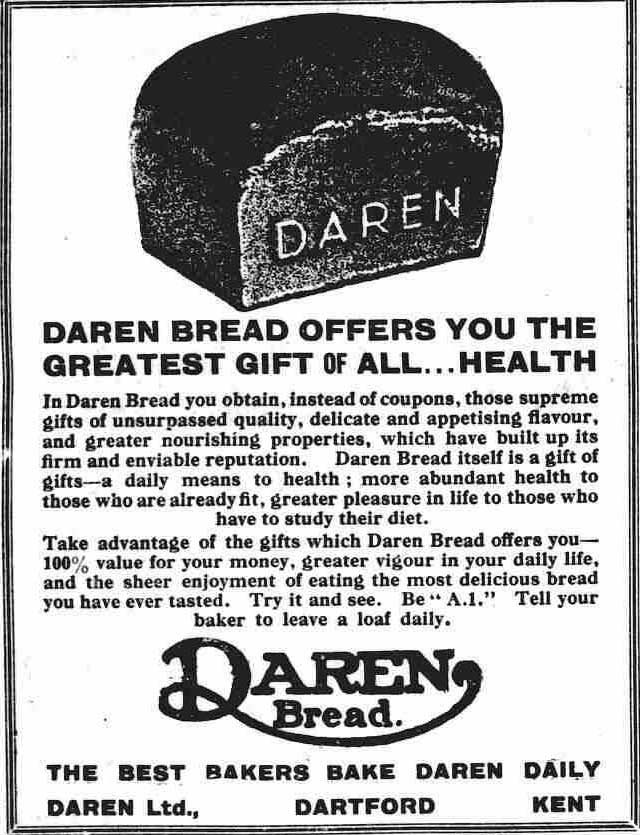
On the wall of the building at number four Stepney Green, you can admire a sign that proclaims, in large and bold letters - "Daren Bread - Best For Health."
It is one of London's many ghost signs and it remembers a brand of loaf that has long since vanished from the nation's bread bins.
Throughout the 19th century you tucked into a mouthwatering slice of bread at your own risk.
Since people believed that the whiter the loaf the better the quality of the bread, Bakers were prone to adulterating their product with all manner of additives.
Alum and/or chalk were popular colourings, whilst bakers could pad out their basic ingredients by the addition of mashed potatoes, plaster of Paris, pipe clay and even sawdust to increase the weight of their loaves. Rye flour or dried powdered beans could be used to replace wheat flour and the sour taste of stale flour could be disguised with ammonium carbonate.
Disgusting as that might sound to our modern palates, the use of such substances in bread was so widespread that, by mid-century, your average town dweller had become accustomed to adulterated and white bread was much in demand.
It was only in the second half of the century that people such as public health pioneer, and member of Parliament Thomas Wakeley (1795-1862) - founder of the magazine The Lancet - and London physician Arthur Hill Hassall (1817-1894), began pushing for reform and, from the 1860's onwards a series of Food Adulteration Acts were passed by Parliament with a view to stamping out the abuses.
As people began to realise just what they'd been putting into their mouths over the years, they became more demanding of those who supplied them with the staples for everyday living, and, to meet this new demand, several brands were established that could guarantee the quality of their flour and set consumers' minds at rest.
The common way this operated was that, the brands would provide the flour to a local baker who would then produce the loaves of that brand under licence.
The best known of these late Victorian brands today is Hovis; but, in the early 20th century Hovis had several major competitors, amongst them Daren Bread.
In the late 1890's and early 1900's, Daren Bread was a household name, and adverts for it appeared in newspapers countrywide.
This one, for example, appeared in the Leighton Buzzard Observer on the 26th of July 1898.

It was a brown loaf, produced by bakers all over the country from flour that was ground at the Daren Mill at Dartford in Kent.
Adverts for it - as is demonstrated by the ghost sign located on Stepney Green - extolled its health giving benefits.
An advertorial in the Navy and Army Illustrated in 1901, for example, advised that "every mother who desires her children to have beautiful teeth and good health should see that Daren bread is their "staff of life" for the first twenty years of life while their constitutions are being made or marred."
The following advert acclaiming its health giving properties appeared in The Courier on February 6th 1934.

However, the mill that produced Daren flour went bankrupt in the 1930's and eventually the Daren Brand was merged into the Hovis brand and phased out.
But its name has lived on in the ghost signs that can still be seen on walls all over the country where, just like the one that can be admired on a wall on Stepney Green, we can reminded of the good old days when manufacturers could make all manner of claims for their products without fear of official censure.